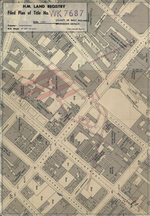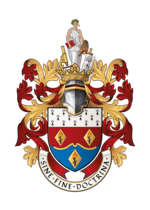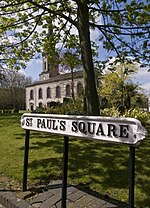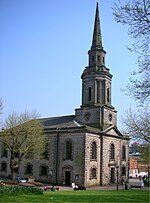Newhall Street

Newhall Street is a street located in Birmingham, England. Newhall Street stretches from Colmore Row in the city centre by St Phillip's Cathedral in a north-westerly direction towards the Jewellery Quarter. Originally the road was the driveway to New Hall occupied by the Colmore family. New Hall was demolished in 1787 after being vacated by the Colmores and used as a warehouse by Matthew Boulton. Newhall Street was so named in 1766, after opening as a public street in 1746 called Newport Street and then New Hall Walk. The streets on the estate were named after the children of the family. A number of telephone exchanges have existed on the street: the 1896 Bell Edison Telephone building, Telephone House (still an exchange), the Cold War Anchor Exchange underneath it, and Brindley House (now renovated into an apartment block).
Excerpt from the Wikipedia article Newhall Street (License: CC BY-SA 3.0, Authors, Images).Newhall Street
Newhall Street, Birmingham Ladywood
Geographical coordinates (GPS) Address Nearby Places Show on map
Geographical coordinates (GPS)
| Latitude | Longitude |
|---|---|
| N 52.483 ° | E -1.905 ° |
Address
Birmingham Central Telephone Exchange
Newhall Street 104
B3 1JX Birmingham, Ladywood
England, United Kingdom
Open on Google Maps










